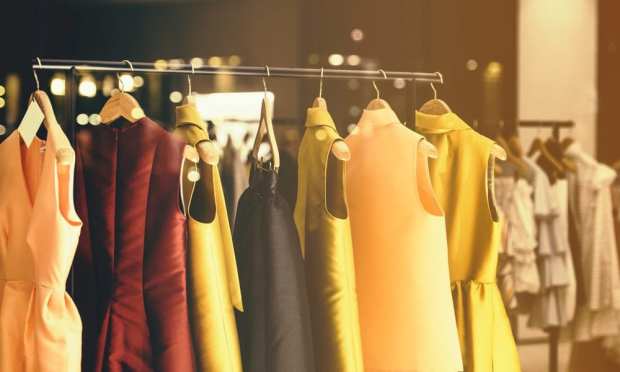Can Digital Assistants Take Luxury Retail To The Next Omni Level?

A common, enduring fantasy for many consumers — a group that likely includes many PYMNTS readers and writers — is walking into a high-end retail store, chain or boutique that sells luxury brands, and spending vast sums on the best clothes, shoes, handbags, watches and other items. That notion still features the plots of movies and TV shows, fuels a good number of rags-to-riches tales and serves as part of the foundation for the ideal we call the American Dream.
However, as in the case with most fantasies, the details of reality complicate the vision. Stores might be out of stock on a certain dress color, or not carry the right sizes (one brand’s expression of “small” is bound to conflict with another brand’s idea, after all). That dream day on Rodeo Drive or The Magnificent Mile — that day of personal reinvention via the power of luxury goods — is probably more likely to turn into a few days of tracking down items that fit or come in a particular style. In short, what was supposed to be a joyful experience turns into hard work.
That possibility might be pumped up with more than a bit of exaggeration, but it’s done in the hopes of making an honest and important point: Shoppers in pursuit of high-priced luxury goods must often waste time and endure periods of frustration before being able to hand over their money to merchants. Anytime that happens, the odds of a completed transaction tend to decrease.
All problems bring business opportunity, though.
In a recent PYMNTS discussion, Karen Webster and ModeSens CEO Brian Li talked about how digital technology — including a recently released barcode-scanning tool — can serve as a shopping assistant platform for consumers of luxury goods, and perhaps do so in a way that goes beyond treating physical stores as mere showrooms for online shoppers. Such a tool, as Li described it, can help bridge offline and online shopping, and further the long-standing retail concept of omnichannel shopping.
Different Proposition
According to Li, ModeSens offers a different digital luxury shopping experience than companies such as Farfetch, which — at last count — connects nearly 900 boutiques and luxury brands to 2 million affluent and luxury-enthused consumers, and offers a universal shopping cart for online purchases. ModeSens, launched in 2015, has no such shopping cart, but instead enables buyers to purchase from stores and luxury brands.
That’s not the main meat of the ModeSens proposition, though. It focuses on giving shoppers information that reduces the time it takes for them to find the exact products they want. “When people jump from place to place,” whether online or by visiting various boutiques and retail chains, Li told Webster, “they have to do all the work themselves. That’s a very hard job.”
Search For Perfection
Just imagine it via the fantasy of that dream shopping day.
Will a boutique have that perfect item, in the perfect size and perfect color — and at the perfect price? (What is the point of luxury if it cannot provide at least a strong approximation of perfection?) If not, what merchant will, and how much homework will be required to match the shopper with that particular item. Granted, many consumers treat the task of shopping — at least, some types of shopping — as a fun activity itself, but it’s never a good bet to make potential customers work too hard to give over their money.
Li knows that truth personally. He told Webster that his wife worked for eight years as a personal buyer. “She was doing a lot of shopping every day, and it felt like she was doing a lot of actual work,” he said. Indeed, that was one of the inspirations behind ModeSens. “We built a service around the shoppers, one that places the shopper at the center.”
The technology powering the ModeSens shopping assistance service offers features that go beyond simple price, product comparison and inventory availability, Li said. Consumers who use the tool can set it to direct them to their favorite stores — based on product preferences, for example, or the fact that a consumer holds a particular store card. Consumers can also arrange for in-store pickup within their preferred geographic area.
Merchant Concerns
That’s fine and all, but shopping isn’t just about the shopper. Merchants tend to have a significant say as well, especially when they are being asked to provide clean, constantly updated data and real-time inventory feeds to a third party like ModeSens, which does digital middleman work. (ModeSens earns a cut of sales made via its shopping assistant app, Li said.)
Webster asked Li if merchants could be reluctant to participate in such a service because stores might be used as showrooms, giving shoppers a chance to inspect a product before buying it from another store that might offer a better price. The recently launched ModeSens barcode tool, available as an Android or iOS app feature, enables consumers to scan a particular item and access detailed product comparisons across all the stores that have partnered with ModeSens.
Li said the reality — the danger of showrooming – is more complicated than might be assumed.
Sure, traditional showrooming — one of the basic, early fears associated with eCommerce and the rise of Amazon — might end up happening. However, consumers, via that barcode tool, might also learn that the best deal (or the best version of a particular product) is at the store where they are doing the scanning. Such information can reduce the hesitation that hits shoppers before many purchases, especially high-priced ones.
“It gives shoppers extra confidence to make the purchase if they learn that only this store has that particular item,” he said. If a store doesn’t have a desired size or color, “they cannot do anything for you anyway.”
Showrooming Fears?
In addition, for a person to do such barcode scanning, they must go inside a store, which, at the very least, gives that merchant more foot traffic. Indeed, that fact gets at the larger point about such a shopping assistant tool: One can help build a larger, more efficient luxury retail ecosystem — one where brands, stores and consumers are brought together for an omnichannel experience, and where a large store of real-time, accurate data can encourage sales, and perhaps even brand and store loyalty.
For ModeSens, according to Li, the future will bring more expansion in brand and store partners. The company now works with some 200 merchants and 12,000 brands across the globe, a network with credibility based on not only accurate data feeds, but verification that those partners sell authentic luxury products and don’t mess up on things like shipping and returns. (ModeSens does its due diligence on merchants, and has about 100 of them waiting to integrate with ModeSens this year. Among the biggest challenges? Retail legacy systems that spit out dirty, inaccurate data, which is a deal-breaker for what ModeSens is trying to accomplish.)
The future will also bring improvements to the ModeSens app so that shoppers are provided with even more precise information, tailored to their personal preferences in quick fashion. For example, a consumer would only see stores that carry a specific, desired size or color, freeing the ModSens user from having to sort through other choices.
Time is really money, and that applies as much to luxury retail as any other endeavor. Sure, shopping can be fun, even a reliable form of stress release, but there is a fine between browsing and product discovery, and something that feels like homework.
